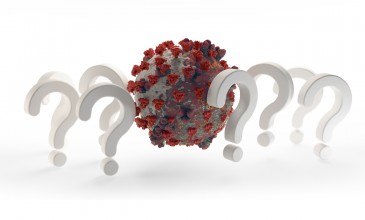Scientists are learning more about the coronavirus every day. Research is being published at a furious place thanks to unprecedented global cooperation. Let’s look at what new pieces have been added to the puzzle in the past week as well as new concerns that were raised.
Loss of smell is also a common symptom
A UK-based tracking app data suggests that loss of smell is a key COVID-19 symptom. Although this symptom is not currently listed on the WHO’s information page, around 60% of the app users with COVID-19 have reported loss of smell, compared to 18% in those who tested negative. The results are published in a preprint paper and other common symptoms include:
- Cough
- Fatigue
- Diarrhoea
- Abdominal pain
- Loss of appetite
Men are more likely to get worse symptoms than women
Several studies have reported that although both men and women are equally likely to catch the coronavirus, a higher proportion of men develop severe symptoms. Around 70% of the patients admitted to ICU have been male and around 75% of those who died were men.
Interestingly, this trend is not just unique to COVID-19 but also previous coronavirus diseases including SARS and MERS. A slightly higher proportion of males exists in viral-caused pneumonia too. Scientists don’t yet know why. But possible reasons include a higher rate of smoking in men, higher rates of chronic disorders in men, and sex-specific immune differences. Notably, there is some evidence that the female sex hormones such as estrogen and progesterone may play a role in boosting immune functions.
High temperature transmission is possible
It was hoped that the virus responsible for COVID-19 would behave like the seasonal influenza virus, which is much weaker in high temperature and humidity. Unfortunately, it doesn’t appear to be the case. One study reported a case who infected 8 healthy individuals in a public bath centre despite warm and humid conditions.
About half infected by COVID-19 is asymptomatic
We now know that the reason for COVID-19’s rapid spread is partly due to a high proportion of asymptomatic cases, which is estimated to be 40 – 50%. The ABC Coronacast‘s host Dr. Norman Swan explains that the only way to prevent asymptomatic spread is to find confirmed cases and trace who they have been in contact with. Strict quarantine and mass testing will be needed identify and contain asymptomatic spread.
Will the coronavirus come back again and again?
A recent paper published in Science projected that recurrent wintertime outbreaks will probably occur after the initial, most severe wave that the world is dealing with right now. Therefore, prolonged or intermittent social distancing may be necessary into 2022. A resurgence is possible as late as 2024. Hopefully, vaccines and treatments will accelerate the success in developing herd immunity and eliminating the virus.
What are the long-term consequences for COVID-19 survivors?
Apart from recurring outbreaks, there are also concerns that those who recover from the viral infections may develop post-infective fatigue syndrome. Viral infections are often linked to long-term side effects such as fatigue, pain and sensitivity to light. However, these effects are still poorly understood. What will happen to people who survive COVID-19? Hopefully nothing serious, but only time will tell.
